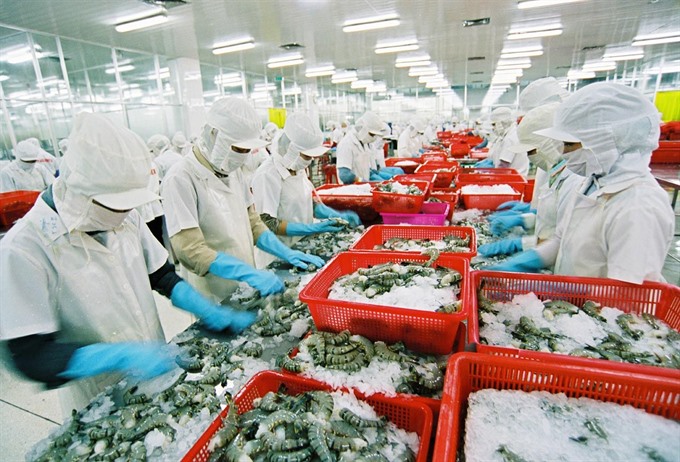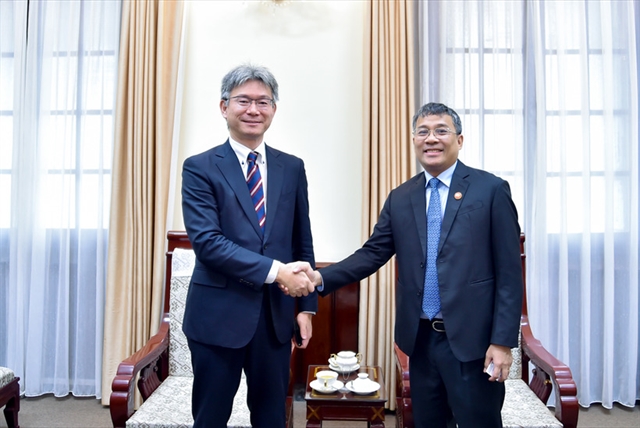 Economy
Economy

The Việt Nam Association of Seafood Exporters and Producers (VASEP) has asked the Government to strengthen the control of temporary imports for re-export of shrimp from India and Ecuador.
 |
| The Việt Nam Association of Seafood Exporters and Producers (VASEP) has asked the Government to strengthen the control of temporary imports for re-export of shrimp from India and Ecuador.— Photo VGP |
HÀ NỘI — The Việt Nam Association of Seafood Exporters and Producers (VASEP) has asked the Government to strengthen the control of temporary imports for re-export of shrimp from India and Ecuador.
VASEP said that China was moving to buy Indian and Ecuadorian shrimps rather than Vietnamese shrimps as they say it is larger in size and very cheap. VASEP wants the Government to minimise commercial fraud in this activity through the Northern Hải Phòng Port to China.
This is one of the recommendations written in a letter that VASEP sent to the Ministry of Agriculture and Rural Development (MARD), as the price of shrimp has dropped significantly in recent times. It is expected to develop sustainable production and export of shrimp from Việt Nam.
In order to share the current difficulties with shrimp farmers, VASEP said that suppliers of shrimp breeds should consider reducing prices of feeds and other necessary things for breeding, for the breeders.
Meanwhile, VASEP recommended the Government and MARD have support policies to encourage input suppliers to have a buying and selling mechanism with appropriate price policies for farmers, helping them overcome difficulties and stabilise shrimp price in the future.
VASEP also urged the Government to discuss this issue with the US side during high-ranking diplomatic activities so that they could quickly remove trade barriers, particularly the imposition of anti-dumping duties on Vietnamese shrimp.
“This is a big obstacle for the competitiveness of Vietnamese shrimp in the US market recently,” the letter noted.
In the long run, to increase the value of shrimp in the international market, the Secretary-General of VASEP, Trương Đình Hòe, said that Vietnamese shrimp must be bred in accordance with international standards such as Aquaculture Stewardship Council and Best Aquaculture Practices. Thus, Vietnamese shrimp will have the opportunity to be placed on shelves in large supermarkets at high prices and stable consumption.
However, Hòe said that small farmers cannot raise shrimp under international standards because of the high cost. Meanwhile, most Vietnamese shrimp are now produced from small ponds.
"Large shrimp farming is becoming an urgent and long-term necessity. Therefore, it is necessary to accelerate the model of shrimp farming co-operation as well as strong solutions for the building of shrimp farms according to international standards to get better results in the long term," Hòe said.
As planned by MARD, the Vietnamese shrimp industry will strive to achieve an export turnover of US$10 billion by 2025, with an average growth rate of about 15 per cent per year and keep the leading position of export turnover in the country’s seafood industry.
In the first four months of this year, the shrimp sector earned $1.02 billion, marking an increase of 13.8 per cent over the same period last year. However, in May 2018 the price of shrimp material decreased deeply causing psychological panic among farmers and may affect the export plan in 2018. — VNS




